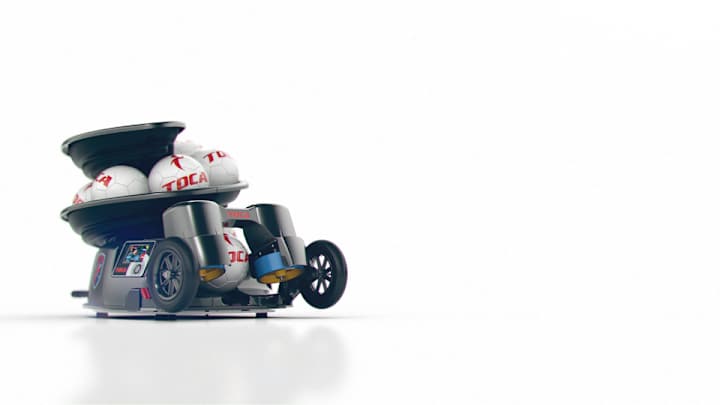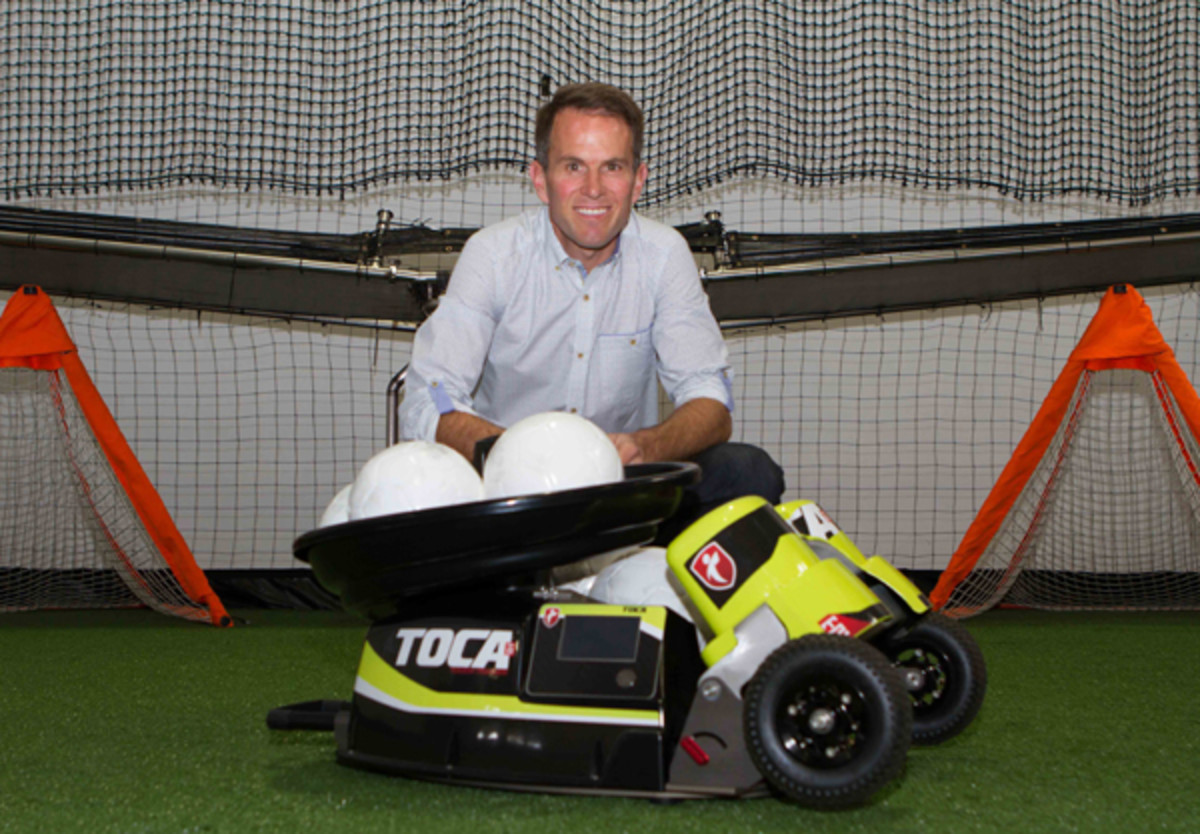High-Tech Touches: Toca Soccer Training Machine

Take a quick glance at the soccer career of Eddie Lewis and you see a guy who pretty much did it all. Four years at UCLA followed by a 15-year professional career that saw Lewis play for two teams in the United States and four clubs in England. On top of that, Lewis, a left-sided midfielder born in Cerritos, Calif., played in the 2002 and 2006 World Cups.
That’s a long and productive career, made even more impressive by the fact that Lewis, in comparison to most of the players he matched up against in England and at the World Cup, got a late start in the game. That’s not just Lewis’ story, of course. That’s the case for most Americans.
“Most of the players in Europe are playing in a professional environment in their teens,” Lewis says. “They are getting so many more touches on the ball than we do at that age.”
With the understanding that it will always be challenging for young American players to get the same number of reps as their foreign counterparts, Lewis has spent considerable time thinking about ways for players to optimize their practice time. He thought about all his experiences in and around American sports, and tried to come up with some ideas.
One of those ideas is about to hit the market.
Lewis is two months away from launching a device that will do for soccer players what a pitching machine does for baseball players. The machine is called Toca (Spanish for touch), is programmable with a cellphone or tablet, and allows for soccer players to get a lot of touches in a little time.
Toca does not shoot regulation-size soccer balls at the player, but rather uses a smaller (size-3) ball. That’s by design, says Lewis.
“I think, after practicing with a size-3 ball, a regulation size-5 ball looks like a beach ball,” Lewis says. “I buy into that theory. When I was at UCLA, I remember watching basketball players working on their three-point shooting on a smaller-than-regulation hoop. Training by doing something that’s more difficult, in order to make the real thing easier, makes sense to me. It is actually similar to something I’d done as a kid.”
Something that spurred the idea for the Toca machine.
A tennis player growing up, Lewis recalled working on his soccer skills while practicing forehands, backhands and volleys. Instead of using his racket, he would practice settling tennis balls with his chest, thighs and feet. He would hit right-footed and left-footed shots out of the air, challenging himself to make pure contact over and over again.
“I got a used tennis ball machine,” Lewis recalls, "and I found I was able to crank out 1,000 reps in a short amount of time, rather than 50 or 60. I was getting a week’s worth of touches in an afternoon. Without those drills, I’d have never been able to catch up.”

When his playing career ended almost four years ago, Lewis was surprised to learn that there was no such machine for soccer players already on the market.
“The tennis ball machine allowed me to train as much as I wanted,” Lewis explains. “And it also came with an increased level of difficulty. For me, that was the magic formula. There’s no reason why this type of training device shouldn’t exist. I mean, it already exists in every other sport. Whether it’s a driving range or a pitching machine, there’s an outlet for repetitious, individual training. All I had to do was tailor it for soccer.”
Lewis and his team of engineers have also added high-tech elements to Toca. Using a smartphone or tablet, a player can get instant feedback on how many reps he has done, what exercises he’s completed, how many steps she’s taken, what her heart rate was.
“The player can choose from a library of exercises or customize his own routine,” Lewis says. “It runs from an app that you download from iTunes.”
